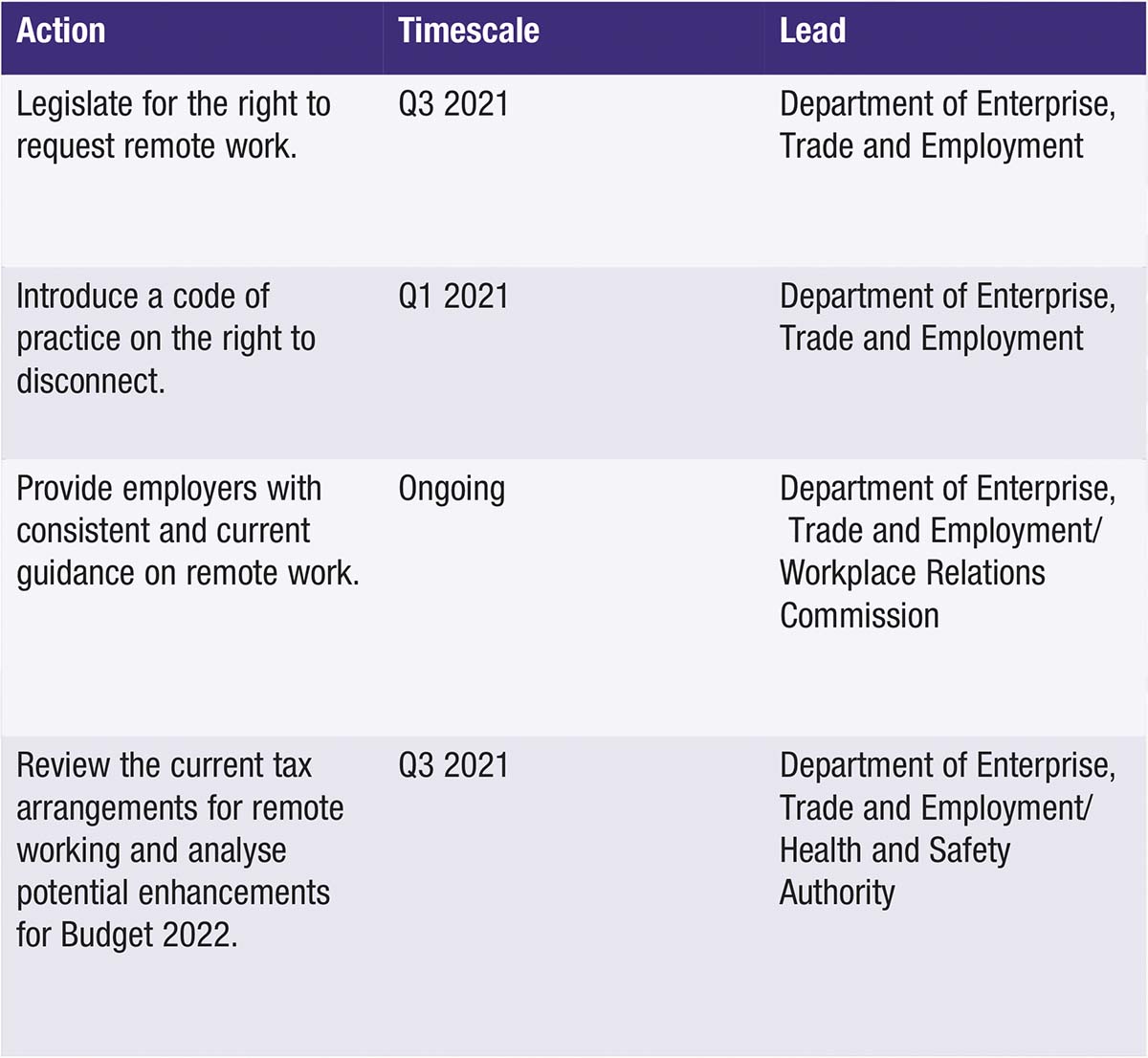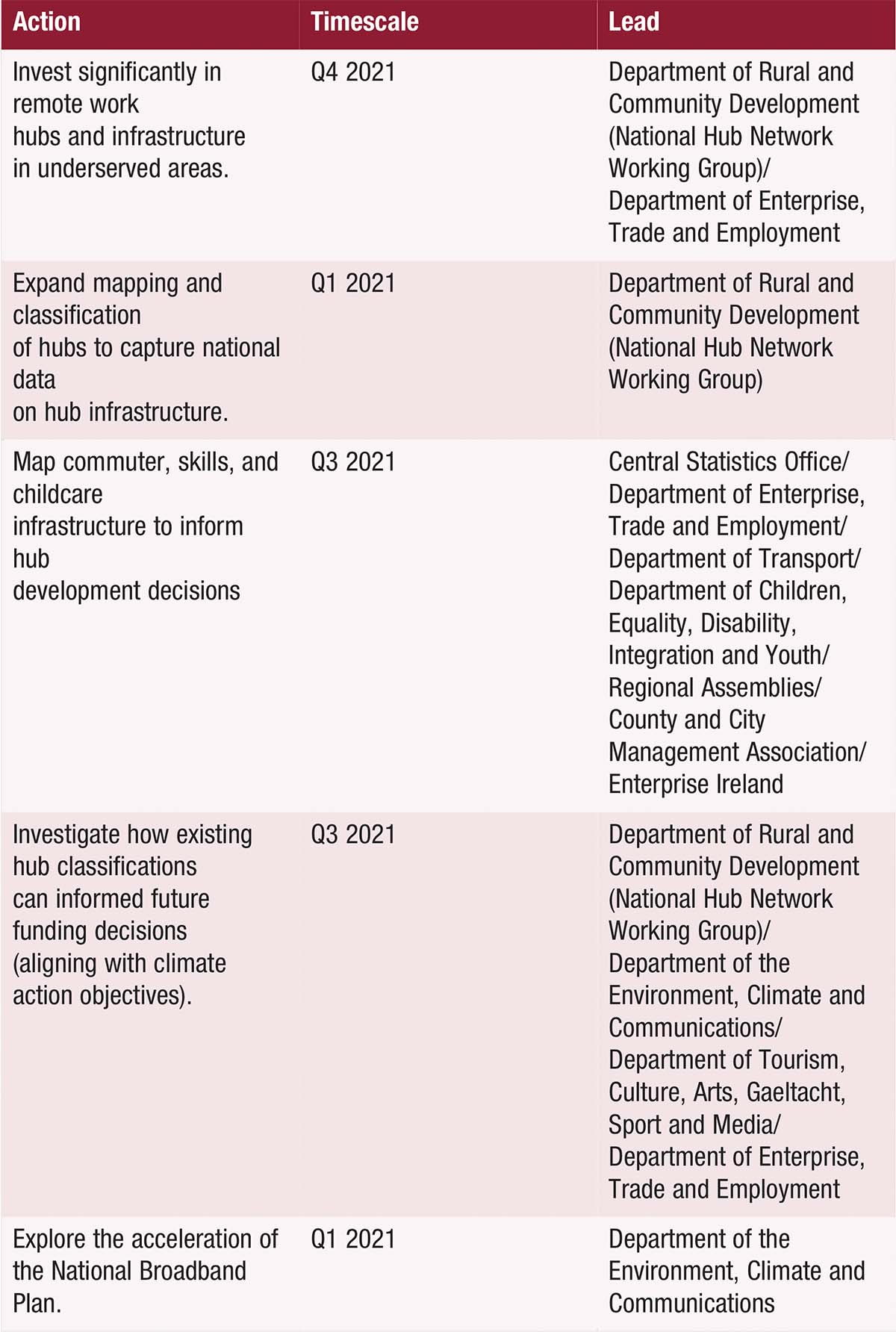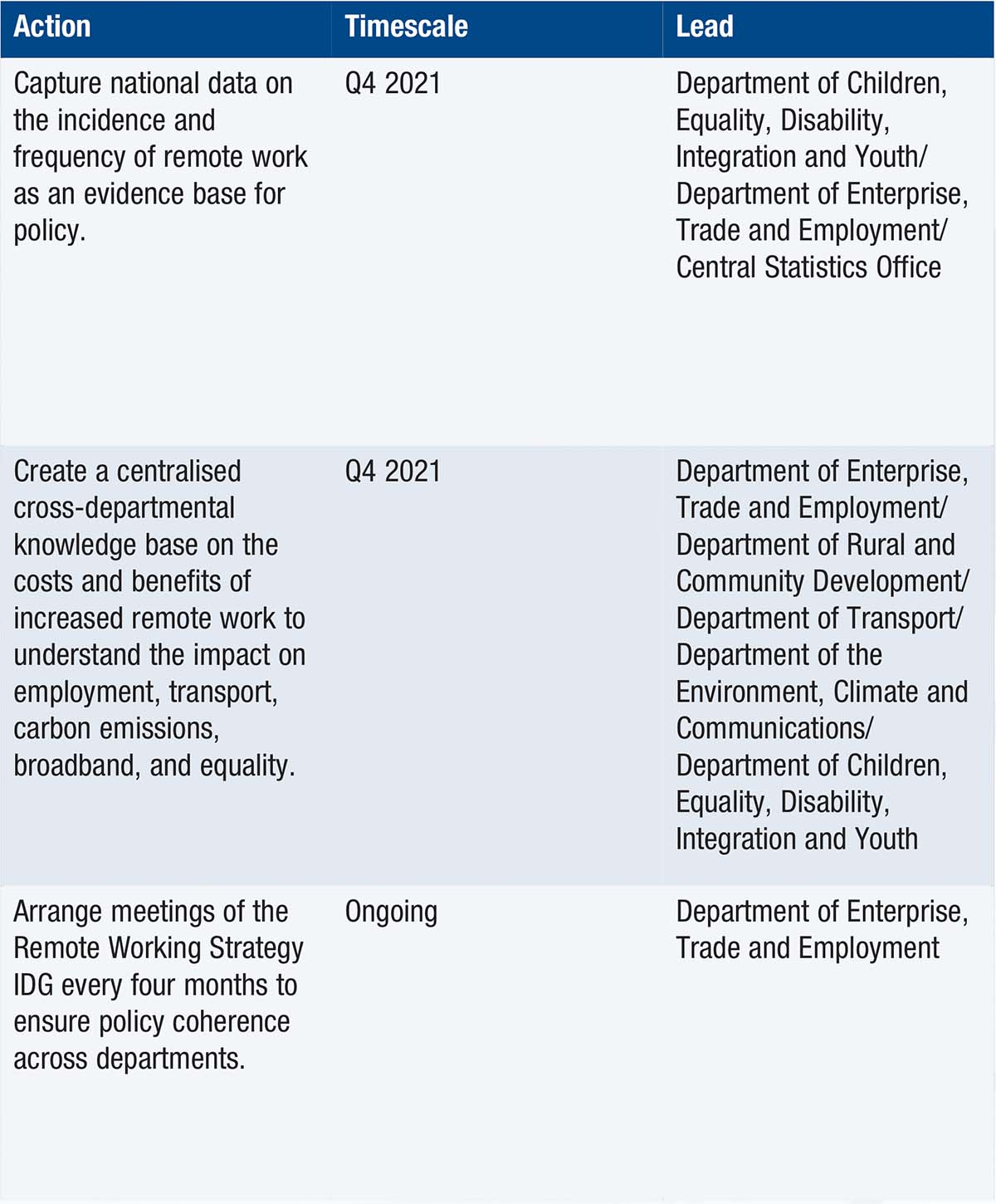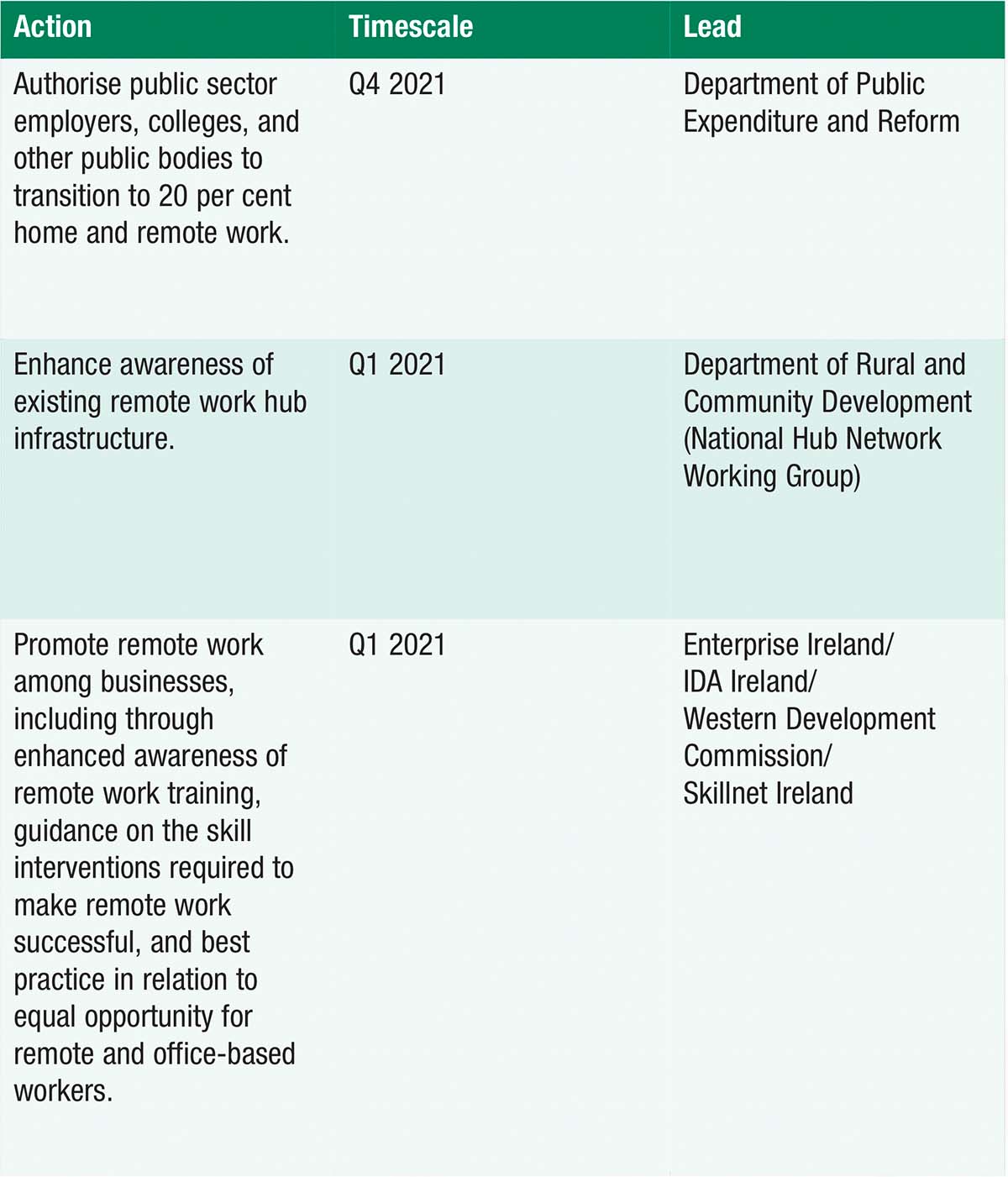Making Remote Work:
The national remote working strategy

Published by the Department of Enterprise, Trade and Employment, Making Remote Work is Ireland’s national remote working strategy. Built upon three fundamental pillars and supported by underpinning conditions, the Strategy contains several immediate actions each with an agreed delivery date in 2021.
Remote work is variously described as telework, e-work, mobile work, smart working, telecommuting, flexible working, locationless work, and platform work. In defining remote work undertaken within the State, therefore, Making Remote Work has adopted the 2002 European Framework Agreement’s classification: “A form of organising and/or performing work, using information technology, in the context of an employment contract/relationship, where work, which could also be performed at the employer’s premises, is carried out away from those premises, on a regular basis.”
Developed under the auspices of a “broad interdepartmental group” comprising multiple government departments and state agencies, Making Remote Work, the State’s first national remote working strategy was published by Tánaiste Leo Varadkar TD in January 2021. The Strategy is informed by the 2019 Remote Work in Ireland report, the Public Consultation on Remote Work Guidance and additional research undertaken in 2020.
Referencing the requirement to work from home where possible during the Covid-19 pandemic, Varadkar reasons that the experience has demonstrated the viability of home, remote and blended working. Post-pandemic, he indicates, “I want remote working to be part of a whole new world of work”. The Strategy, therefore, is intended to facilitate this new approach to work.
Asserting that it must be “done right”, the Tánaiste emphasises the need to update employment rights and work spaces, as well as fostering a cultural shift.
In his foreword, the Tánaiste acknowledges that in the absence of the pandemic, the shift to remote working might otherwise have taken years. While conceding that a return to the office is a likely prospect for many, he contends that “most of us will be blended workers”.
For employers and employees, there are several mutually advantageous benefits emanating from remote working. These include:
- improved employee retention;
- enhanced regional development;
- increased labour market participation;
- more workplace diversity and inclusivity;
- greater work/life balance;
- time and cost efficiencies; and
- reduced pollution carbon emissions.
At the same time, the Making Remote Work strategy identifies a number of potential disadvantages. From an employee perspective, this includes isolation, loneliness, increased stress and subsequent mental ill health, and inability to ‘switch off’ resulting in increased working hours.
However, many of these challenges are associated with the emergency homeworking necessitated by the pandemic, rather than remote working necessarily. Indeed, Making Remote Work stresses that “it is important not to conflate the experience of home working during the Covid-19 pandemic with remote working under a regular scenario”. The swift transition fostered difficult working conditions for both employers and employees in the context of inadequate infrastructure, unsuitable home environments and, for a time, an absence of childcare and schooling.
Despite these challenges, the Remote Working during Covid-19 national survey (June 2021) found that 75 per cent of participants would like to work remotely post-pandemic.
As such, the Strategy aspires to ensure that remote work becomes “a permanent feature in the Irish workplace in a way that maximises economic, social and environmental benefits”. Public policy, it acknowledges, has a role to play in realising this objective.
Overall, the Strategy asserts that increased remote work has the potential to transform the nature of work in Ireland, including who works and where, when, why and how they do so. For instance, increased remote work could reenergise villages and towns beyond the Greater Dublin Area, with increased flexibility encouraging people to relocate for work.
Government has asserted its commitment to facilitating increased remote work “in a way that reaps the many benefits and mitigates negative side-effects”. To achieve this, it has pledged to remove barriers, develop infrastructure, produce guidance, raise awareness and lead by example.
Pillars
Fundamentally, Making Remote Work has three pillars braced by “underpinning conditions”.
- Pillar One: Create a conducive environment Pillar One aims to cultivate an ecosystem that is conducive to remote working through support for employers and employees.

- Pillar Two: Develop and leverage remote working infrastructure Pillar Two identifies the need to develop relevant infrastructure to enable employers and employees to capitalise on remote working opportunities at home and in hubs. This includes investment in national hub infrastructure and delivery of the National Broadband Plan.

- Pillar Three: Build remote work policy and guidance framework Pillar Three is focused on the optimisation of remote working to achieve public policy objectives. As such, policymakers must coalesce around a shared vision, underpinned by relevant data and collaboration.

- Underpinning conditions: Promotion and skills Each of these pillars are supported by underpinning conditions which are orientated to promote remote working, deliver the associated skills, and demonstrate best practice in the public sector.






